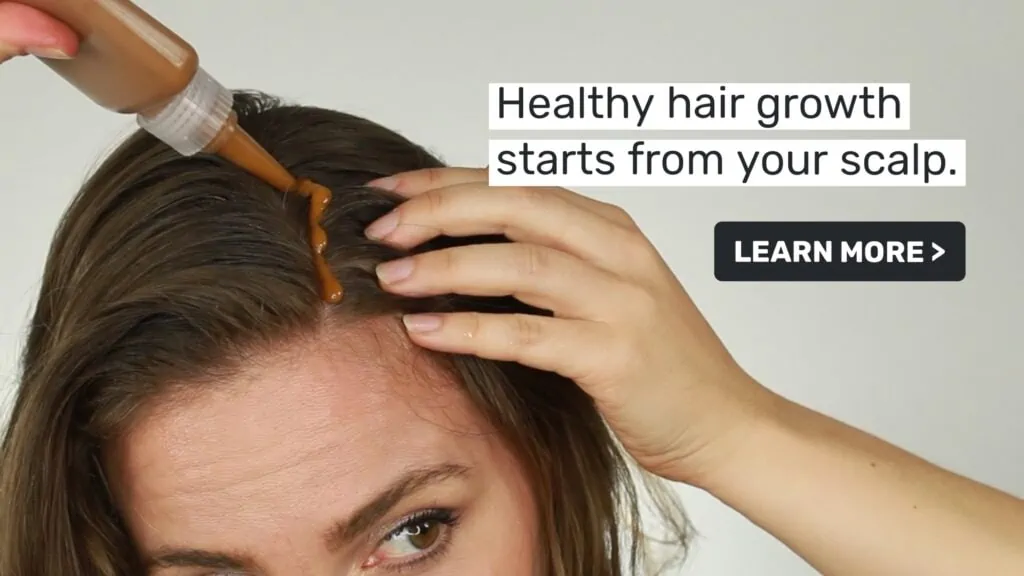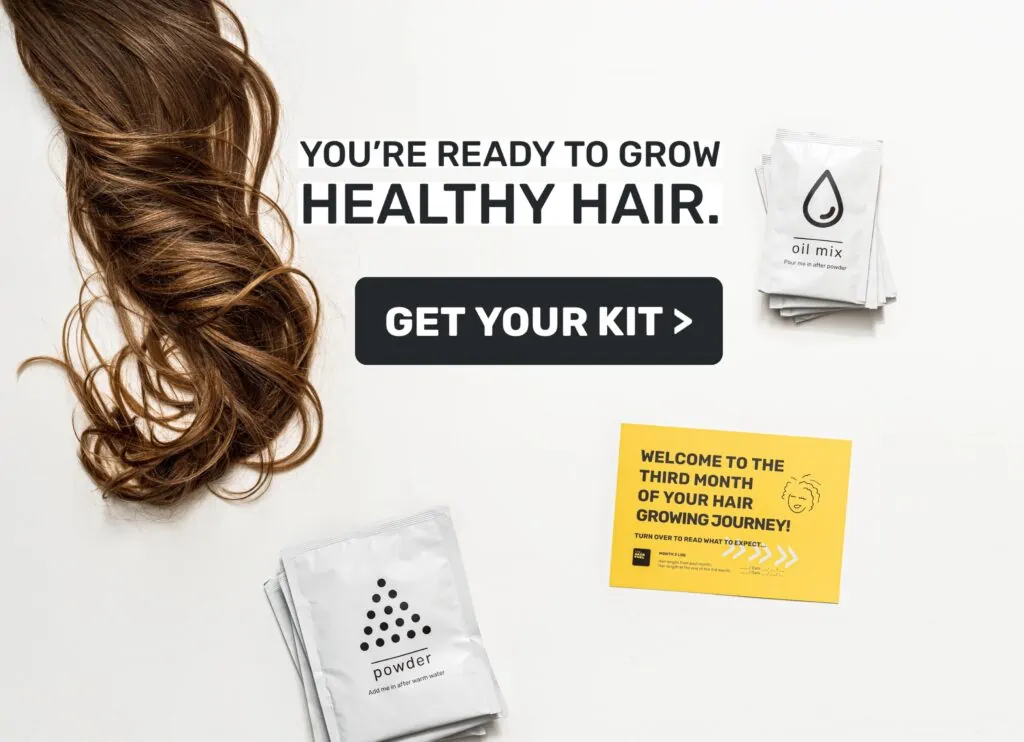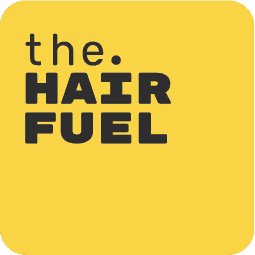Medical science has shown us that there are many factors that can affect hair growth. Diet, stress levels, hormones and genetics all play a role in the rate at which your hair grows. Some of the most successful treatments for thinning or balding scalp is those focusing on improving blood flow to scalp. However some of these treatments have side effects so here we focus on the natural remedies as well as techniques to help you grow healthy hair as well as accelerate hair growth results.
Hair and genetics
You’re born with all the hair follicles you’ll ever have: all 5 million of them. Of those, about 100,000 follicles are on your scalp. When it comes to losing hair, it’s totally normal to lose about 50 to 100 hairs a day – most of these are taken up by new hair growth anyway. Hair grows from a root at the bottom of a hair follicle in your epidermis. The blood in your scalp goes to the follicle and supplies oxygen and nutrients to the hair root, which helps hair grow.
While genetics plays a role in maintaining healthy hair growth, several other factors also come into play. Genetic hair loss can’t be reversed, but there are steps you can take to slow it down and maximize your hair growth potential. For men, male patter hair loss (MPHL) starts as an m-shaped recession at the front of your scalp and often starts in your 20s or 30s. About 80% of men experience MPHL by age 80.
Women often experience hair loss after menopause in the Ludwig pattern, which is a gradual recession along the part of your hair. About half of women of women will experience female pattern hair by the time they’re 80. Androgenetic alopecia, the medical name for MPHL and FPHL, is the most common cause of hair loss.
No magical potion or remedy will result in instant growth (emphasis on “instant”), but some steps can lead you to successful hair regrowth as well as reducing hair loss faster than others.

1. Avoid restrictive dieting
While we can’t control everything that affects our hair growth, as we are subject to changes to the environmental factors, products and medications we use and take whose effects can range from hair thinning to hair loss, there are things we can avoid that may cause impaired growth and increased shedding. Restrictive dieting can decrease resources and nutrients needed for hair growth and since hair growth isn’t a life-supporting function, it suffers amongst the first when the body is put under stress. Examples of such stress factors include restrictive dieting that signal your body that you’re potenitally experiencing prolonged famine and food shortage, and therefore it starts anticipate shortages of nutrients and prioritises life-supporting functions, instead. Hair shedding goes on for a period of months even after ressuming a healthy diet.
2. Check your protein intake
Your hair consists of 85-90% keratin – a complex protein that also makes up majority of your skin and nails. In turn, keratin is built up by 18 essential and non-essential acids. Your body needs those building blocks to grow new healthy hair. Depending on your lifestyle, 0.8g of protein per kilogram of body weight is daily recommended dose of protein. E.g. for a person weighing 70kg needs 56g of protein a day.
3. Caffeine-infused products
We all know that caffeine can give you an energy boost, but one study found that it may also have growth-promoting effects on your hair. Caffeine may help promote new hair growth at the molecular and cellular levels in both men and women. For these effects, caffeine should be applied topically – i.e. on your scalp rather than ingested internally. In studies, caffeine cancelled out negative effects of testosterone on hair growth, but also caffeine alone when applied to a hair follicle which was not pre-treated with testosterone – had lead to improvement in hair growth.
4. Explore essential oils
Essential oils not only smell good, but they may also help promote hair growth. The two “winners” are peppermint oil and rosemary oils due to similar effects on the scalp’s blood flow. Peppermint being a powerful vasodilator – as well as menthol receptors in hair follicles reacting to menthol in the oil itself. A clinical review examining rosemary’s ability to spur hair growth highlighted its circulation-enhancing effects, rosemary having an improvement to the microcapillary profusion in hair follicles. A healthy head of hair requires good circulation since this promotes blood flow in the scalp as well.
5. Boost your nutrients
Specific vitamins, minerals, and fatty acids are especially important for your overall health and also play a key role in providing your body with the energy needed for hair growth. This includes:
- vitamins C, D and E
- B vitamins, including Biotin
- zinc
- iron
- omega-3 and omega-6
One study found that taking omega-3 and omega-6 supplements for 6 months may help protect against hair loss in females. Data from another study suggested that lower zinc levels may play a key role in hair loss. While the research demonstrating the efficacy of biotin is limited, it plays a role in synthesising amino acids that your body uses as building blocks to produce keratin.
6. Take care of split ends
It may seem counterintuitive, but if you want long hair that’s actually healthy, you need to monitor your split ends and trim them as necessary. There is no point in growing long hair if their ends are split and / or breaking – this results in sad looking hair, rather than something you feel proud of. If you don’t want to pay the cost for the hairdresser for a quick trim, you can use a search & destroy technique to keep the lengths of your hair while still taking care of your split ends. It is also a relaxing, self-grooming activity. Make sure that to use dedicated sharp, hairdresser-grade scissors which you don’t use for anything else but your hair.
7. Distribute your hair’s natural oils
Using a boar bristle brush, work your way up from your ends to your roots. Such technique ensure that you don’t end up with the knots at the end of your hair thus reducing split ends and tangles. As you worked your way up to your scalp – brush your hair carefully in different directions thus massaging your scalp and improving the scalp blood flow. Boar bristle brush also helps distribute sebum along the length of your hair – which moisturises it as well as reduces concentration of oil at the roots of your hair enabling you go for longer between the washes.
8. Scalp massage
A scalp massage helps promote relaxation and relieve stress. But, according to a small study in Japan, participants who followed a regimented 4 minute long daily scalp massages led to increased hair thickness. Note that with scalp massage you may observe initial hair fall – due to mechanical disturbance of the hair follicles already in telogen stage. This hair would have fallen out across the period of 3 months, however mechanical stimulation simply nudges the hair out early.

9. Reduce the heat
Heat from curling irons, hair dryers, and straighteners can damage your hair and cause breakage. While avoiding heat styling altogether may not be an option, you may want to try limiting how often you use these tools. Decreasing the temperature of heated styling tools can also help reduce hair damage. Whenever possible however, always give preference to drying your hair under low heat. If you’re looking to curl your hair, better use soft rollers or braiding to create waves and curles in hair that’ naturally straight.
10. Go easy on colouring your hair
When we dye our hair and change the texture with chemicals, these processes put stress on the hair and often causing it to break. Many permanent hair dyes use ammonia which permanently opens up the hair cuticle – which leads to constant moisture loss and result in britleness of the hair strand. There is a variety of ammonia-free hair dyes as well as simply embracing and exploring your natural hair colour.
11. Cool off your showers
A hot shower dehydrates your skin and hair. Just below the scalp lie oil glands, and they secrete sebum to protect and moisturise the scalp. Hot water is not very friendly for these oils. Along with the shampoo that you apply, it strips the sebum and makes your scalp dry and dehydrated. Hot water leads to hair cuticles to open wider than when you wash hair with warm or cool water, which causes the moisture loss from the inside of the hair. Also, as cuticles open more in response to hot water, they are more prone to getting chipped off while shampooing. So in the long run, this creates weak spot and uneven surfaces on hair, making it further susceptible to breakage.
12. Be careful when you brush wet hair
Hair is especially susceptible to breakage when it’s wet. Water exposure swells and stretches the hair’s shaft, which causes the hair cuticle to lift. Similar to washing your hair with hot water this state is fragile and more susceptible to mechanical damage from brushing. nstead, brush hair before shampooing and when shampooing avoid tangling your hair lenghts (since they don’t need much shampoo anyway) and only focusing on applying shampoo on your hair roots. When finished with your shower, make sure to gentle squeeze it with a micro-fiber highly absorbent towel and do not rub your hair as you take off your towel! If you must, use a gentler wide-tooth comb or detangling brush to reduce friction, working from the ends up in small sections to prevent tearing hair.
Who we are:
The Hair Fuel is an all-natural hair growth mask created by Laura Sagen, who lost a third of her hair after a terrible visit to a hairdresser while suffering from a life-long condition of PCOS associated with androgenic hair thinning. She developed the formulation rooted in the science of scalp blood flow, which has become The Hair Fuel growth mask. Since then, her company has helped thousands of people like you to start growing healthy hair.
We work closely with our lab and manufacturers to ensure the highest quality product. But a product alone is never enough – so we hold your hand throughout your own, unique hair growth journey. Our flagship product, The Hair Fuel mask coupled with tailored advice, digital tools, and online support is there to help you grow the best hair you can. It’s a big claim – but we’re unafraid to make it. Check out our starter bundles >>
Sources:
- Genetic prediction of male pattern baldness, (1)
- Female Pattern Hair Loss: A Retrospective Study in a Tertiary Referral Center (2)
- Differential effects of caffeine on hair shaft elongation, matrix and outer root sheath keratinocyte proliferation, and transforming growth factor-β2/insulin-like growth factor-1-mediated regulation of the hair cycle in male and female human hair follicles in vitro (3)
- Rosemary oil vs minoxidil 2% for the treatment of androgenetic alopecia: a randomized comparative trial (4)
- Effect of a nutritional supplement on hair loss in women (5)
- Standardized Scalp Massage Results in Increased Hair Thickness by Inducing Stretching Forces to Dermal Papilla Cells in the Subcutaneous Tissue (6)
- American Academy of Dermatology: What kids should know about how hair grows (7)
